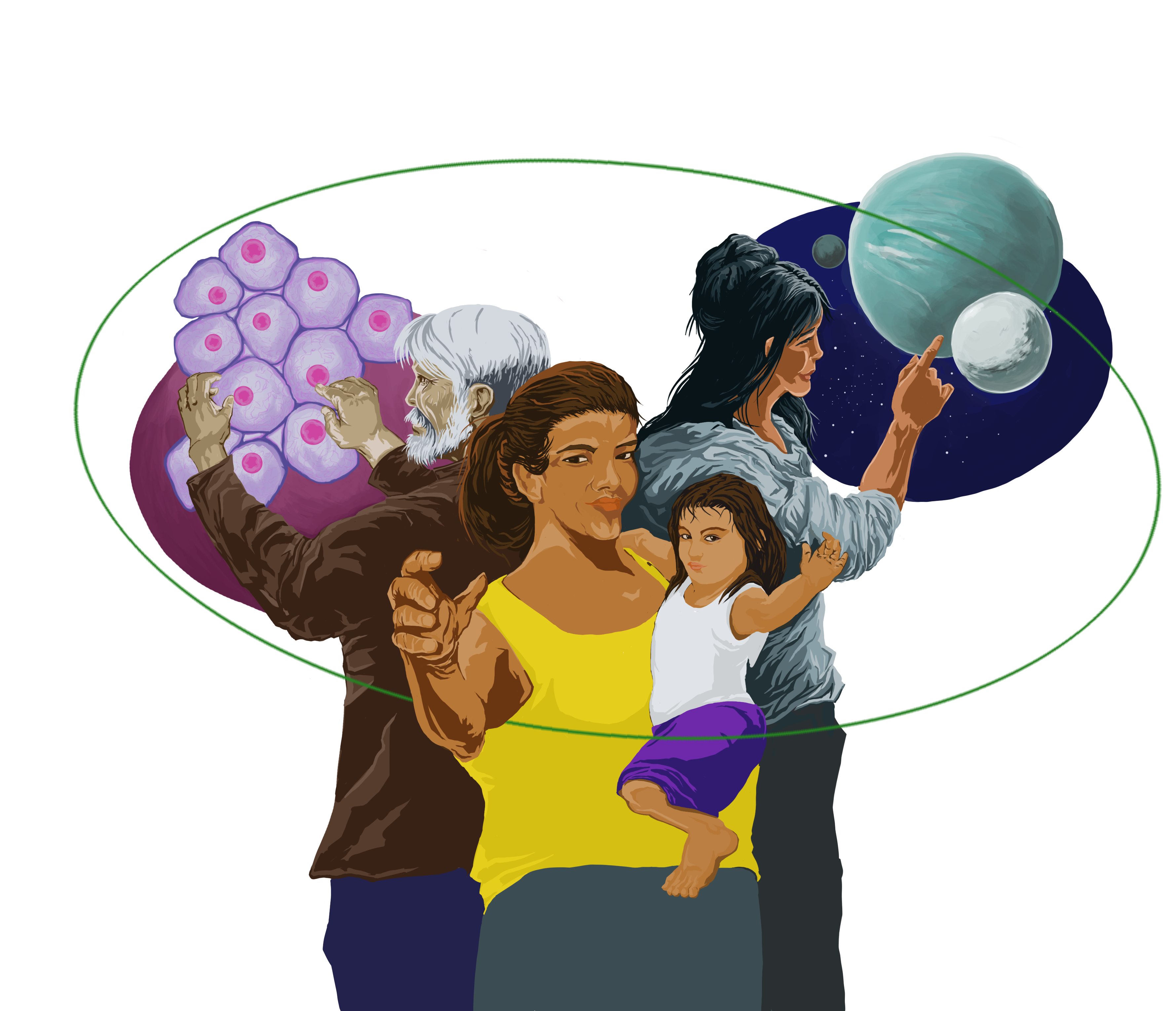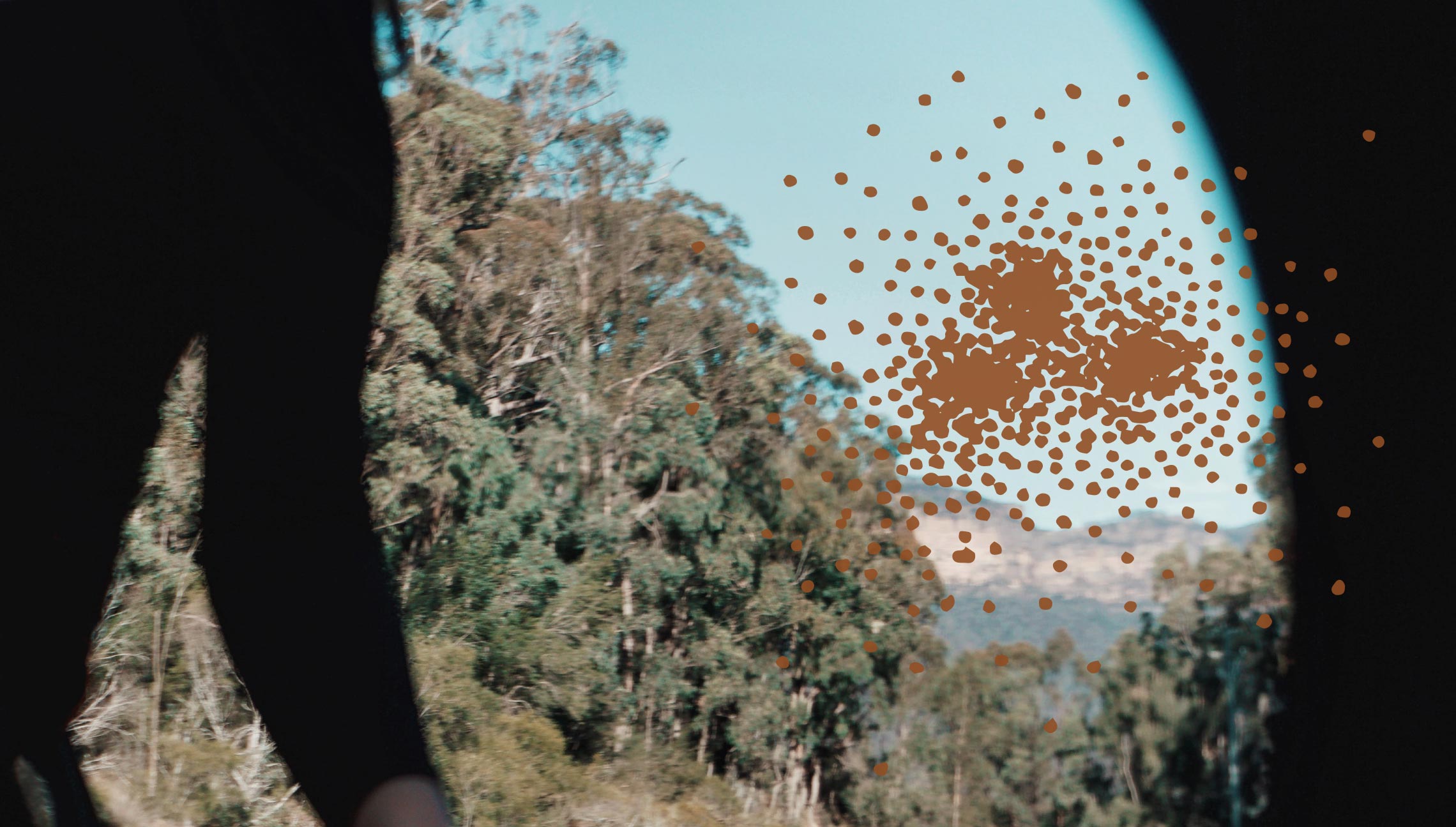What is Cybernetics? That’s the million-dollar question. One I asked my colleagues when I joined the ANU School of Cybernetics earlier this year, and one that many, many people have asked me since. It took me a while to get my head around this one. In the quest to understand cybernetics, my “breakthrough” came when I read a book written by French scientist Joel de Rosnay in 1975, titled “The Macroscope: A New World Scientific System”.
Understanding the Infinitely Complex#
While not classifying himself as a cybernetician, Joel de Rosnay – Doctor of Science, science writer, futurologist – does a great job at explaining what cybernetics is. He draws from the core concepts of cybernetics to build a “new symbolic instrument made of a number of methods and techniques borrowed from very different disciplines”: The Macroscope.
Where the microscope allows the observation of the infinitely small, and the telescope of the infinitely great, the macroscope is a lens through which to see and understand the infinitely complex. This symbolic instrument allows for the analysis of complex systems: from cells, to cities, to human societies and ecosystems.
The macroscope emerged as one element of a new approach for grappling with complexity: what Joel de Rosnay calls the systemic approach. Writing at the time, he defines it as “a new methodology that makes possible the collection and organisation of accumulated knowledge in order to increase the efficiency of our actions”.

Cybernetics and Systemic Approaches#
The systemic approach stems from the integration of several disciplines – biology, information theory, cybernetics and system theory – and started developing in the aftermath of World War II. To J. de Rosnay, the systemic approach embraces the cybernetic approach developed by American mathematician Norbert Wiener (1894-1964) 20 years prior. Most importantly, it aims to expand the application of cybernetic thinking. Where Wiener’s cybernetics’ main objective was to find a common framework to study communication and control in living organisms and human-built machines, de Rosnay’s systemic approach develops a framework to comprehend all complex systems, from the cell, to living organisms, to businesses and industry, cities, economies and ecology.
Tasked with designing automated antiaircraft weapons during WWII, Norbert Wiener and his colleagues – electrical engineer Julian Bigelow and neurophysiologist Arturo Rosenblueth – saw the value in drawing parallel between how automated machinery and living beings operate. For example, a machine would need sensors and feedback from its environment to be able to adjust its aiming to a moving target. The same phenomenon is true of the human body and is called motor control. In neuroscience, motor control is the process where the nervous system receives and processes sensory information to help direct muscles to carry out a goal, for example extending your arm to pick up an object.
Today, one of the most topical instances of cross-disciplinarity between biology and computer science is to be found in the field of artificial intelligence. The perceptron, the basic unit for neural networks of modern deep learning algorithms, originated from neuroscience and a desire to model the functioning of the brain. The mathematical model was developed in 1943 by American logician Walter Pitts and neuroscientist Warren McCulloch. It was only just over a decade later, in 1957, that psychologist Franck Rosenblatt successfully implemented the Perceptron machine, thus creating artificial neural networks from the modelled biological neural networks.
“What McCullough and Pitts showed was that a neural net could, in principle, compute any function that a digital computer could. The result was more neuroscience than computer science: The point was to suggest that the human brain could be thought of as a computing device.” – MIT News Office
In a sense, computer science informed biology that then in turn informed computer science.
The goal of cybernetics was to develop a common framework and vocabulary for disciplines as far apart as biology, psychology, neuroscience, engineering and anthropology. To this end, cyberneticians developed unifying concepts related to the behaviour of machines and living beings. Among them, a few emblematic examples are:
- The feedback loop previously mentioned, which allows for “the evaluation of the effects of one’s actions and the adaptation of future conduct based on past performances”.
- Variety, a concept developed by English psychiatrist Ross Ashby encompassing (i) the number of different elements that make up a system, (ii) the number of different relationships between these elements, or (iii) the number of different states of these relationships.
- Homeostasis, an expression coined by American physiologist Walter Cannon, to speak of the ability of highly complex open systems to remain stable and adapt to external disturbances.
Taking Cybernetics beyond Biology and Engineering#
If complex systems as different as a human body and an automated machine could be governed by similar principles, then could these very principles also govern other systems? If this is the case, are these cybernetics concepts unifying enough to apply to anything and everything? Could we develop an approach applicable to the study of all things?
A few have tried. Among them is Stafford Beer (1926-2002), a British foundational figure of management cybernetics. He applied cybernetics concepts to economic systems, industries and even national economies. In 1971, he started working with the Chilean Allende government, on developing a “technology-driven, state-led economic model”. The Cybersyn project was born, a plan for the cybernetic regulation of the social economy of Chile: “The goal was to run the entire national economy in real time, and thus give Chile the most advanced system of governance on the planet.” It notably comprised a network of telex machines (teleprinter devices able to send and receive written text-based messages), installed in factories of nationalised industrial organisations that would track performance indicators and send early warning signals to the factories for production self-regulation. The data was also fed into an algorithm to simulate and forecast the economy. The project was cut short by Pinochet’s coup in 1973.
In a sense, J. de Rosnay’s systemic approach really is a cybernetic approach extended to bigger systems. The Macroscope was a first step in his endeavour to develop a unifying theory of all things, which he would later introduce in his 2012 book Surfing life: How to survive in a fluid society. A surfer himself, and pioneer of the sport in France, J. de Rosnay uses surf as a common thread for his theory:
“The surfer doesn’t create the wave, which is by nature random and chaotic, he uses its strength and power for enjoyment and to challenge himself. To surf life is to learn to profit from and to enjoy the moment, to listen to one’s environment and one’s networks, to evaluate in real time the results of one’s action, and to adapt oneself to the unexpected.”
Still, in The Macroscope, J. de Rosnay warns of the danger of unifying theories, which can transform into dogmatism. He quotes French philosopher and sociologist Edgar Morin (102 years old as of today): “Too much unification can become abusive simplification, then an idée fixe or a turn of phrase.”
Cybernetics to Drive Action#
What is refreshing about J. de Rosnay’s approach is the emphasis put on implementation. More than a theoretical lens, the macroscope is a practical tool for guiding action. If the author concedes that the systemic approach “uses models that are insufficiently rigorous to be used as bases of knowledge”, he insists on their usefulness in “decision and action”.
At the end of his chapter on “The Systemic Revolution”, de Rosnay offers “Ten Commandments” for the practical application of the systemic approach, recognising that “of course, many people will have an intuitive knowledge of these laws, which are very much the result of experience or simple common sense”. For example, he urges readers to appreciate the diversity of complex systems, the usefulness of decentralisation processes and of imposing limits and constraints, or the necessity to focus on objectives and purpose rather than on means.
I would argue that guiding action is also the ultimate goal of cybernetics. J. de Rosnay points out that, for the French mathematician and cybernetician Louis Couffignal, cybernetics was in fact “the art of assuring efficiency of action” (1958). Norbert Wiener, who “coined” the word in 1948 explained in The Human Use of Human Beings, Cybernetics and Society, that he “derived *(cybernetics) from the Greek word ‘kubernetes’, or ‘steerman’, the same Greek word from which we eventually derive our word ‘governor’”. J. de Rosnay reminds us, however, that earlier encounters of the word exist: ancient Greek philosopher Plato used it in the sense of “the art of steering” or “the art of government”, and French physicist and mathematician André-Marie Ampère in 1834 to mean “the study of ways of governing”.
Cybernetics and governance do have the same etymology. What is governance if not the “art of managing and directing highly complex systems”? Could we then give the same definition to cybernetics?
A Few Words on Joel de Rosnay#
When the book was published in 1975, de Rosnay had just moved to Paris to work at the Institut Pasteur. From 1967 to 1974, he lived in Boston, where he worked as a researcher at the Massachusetts Institute of Technology (MIT). De Rosnay describes his time at MIT as extraordinary:
“Noam Chomsky and Murray Eden were working one floor below. It was a period of excitement: we were discovering the ARPANET, a U.S. Department of Defense tool and forerunner of the Internet.”
We can speculate that then and there, he was exposed to the ideas of cybernetics, which seem to have greatly influenced his work. Indeed, Norbert Wiener, the “father” of cybernetics worked at MIT for most of his career.
De Rosnay was also a member of the Groupe des Dix (Group of Ten), a French transdisciplinary think-tank created in 1966, gathering biologists, sociologists, politicians and philosophers, and often perceived as being a French take on the cybernetics movement. Since then, Joel de Rosnay has extensively published on the impact of new technologies to society.
About the Book#
The book was originally published in French in 1975: Le Macroscope : Vers une vision globale, éditions du Seuil, 1975. A copy of the French first edition is available at the Australian National Library in Canberra.
An English version from 1979 exists and is available to read online: The Macroscope: A New World Scientific System, Harper & Row, Publishers, Inc., 1979. All quotes here are from this latter translated version.
Written by Sarah Vallee, Secondee at the ANU School of Cybernetics
Microscope, Telescope and Macroscope. Original illustration, credit Thomas Biedermann

